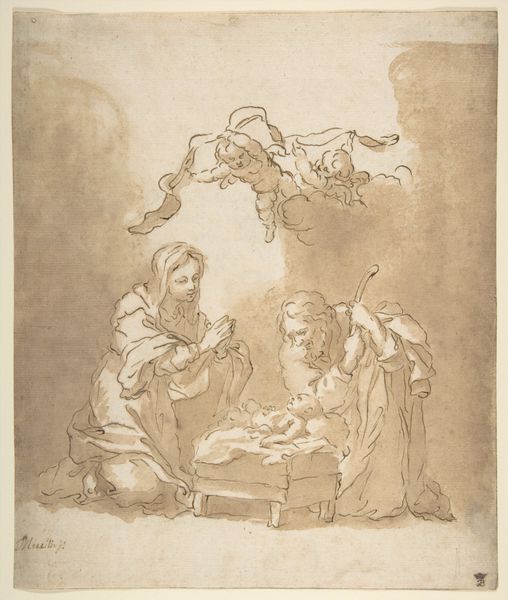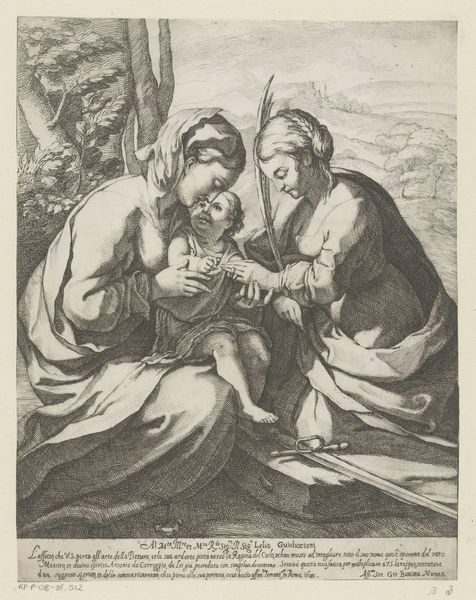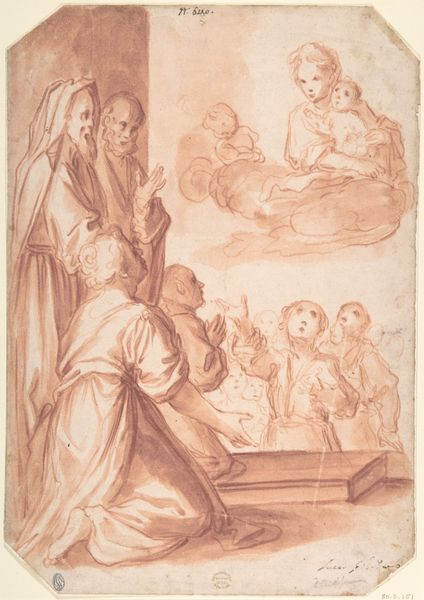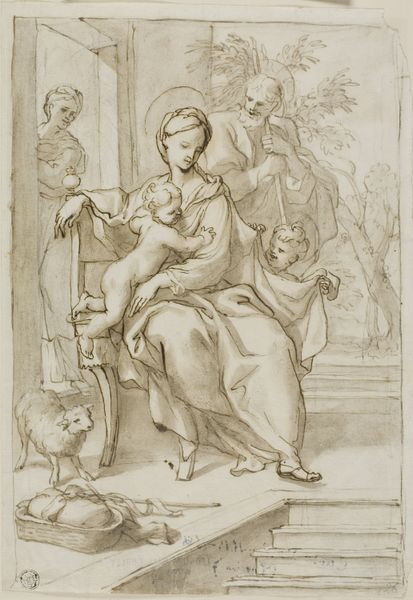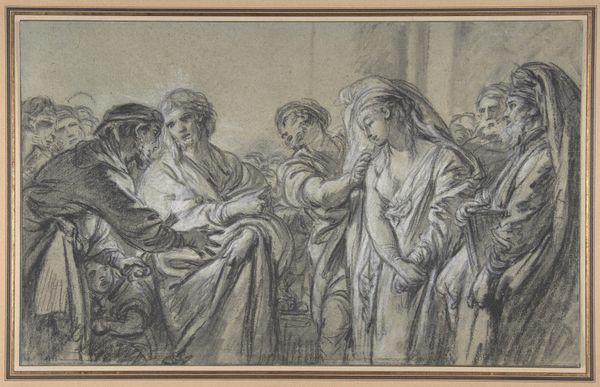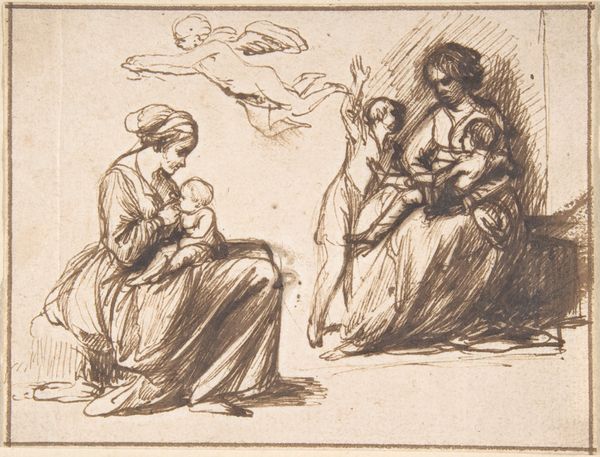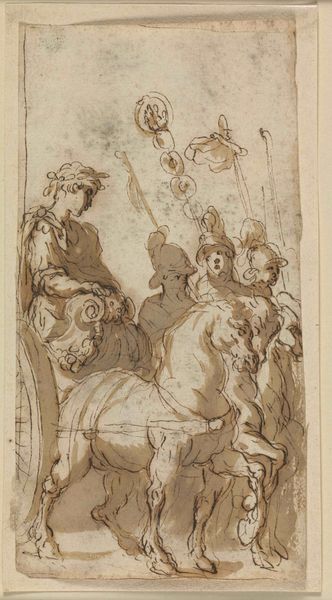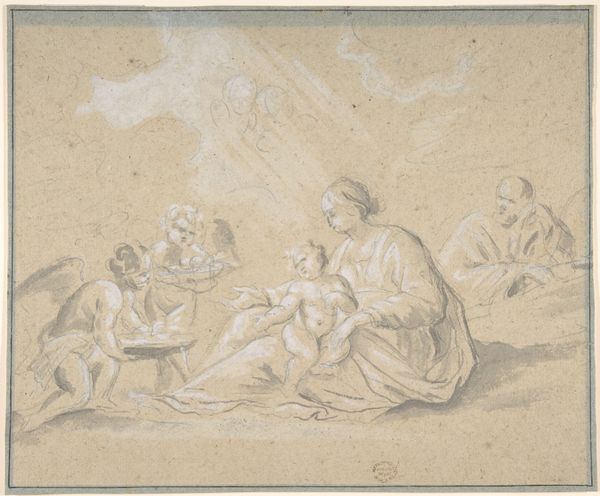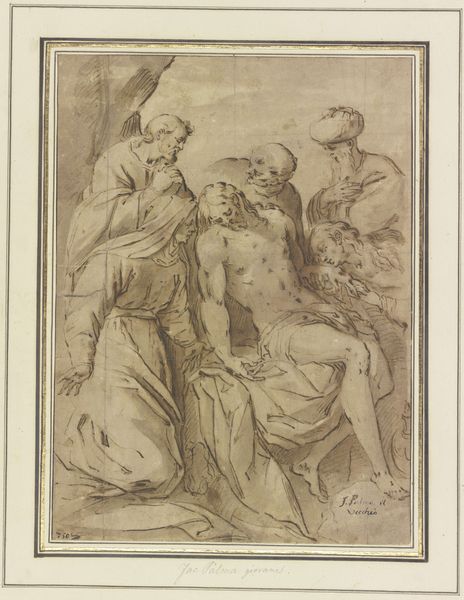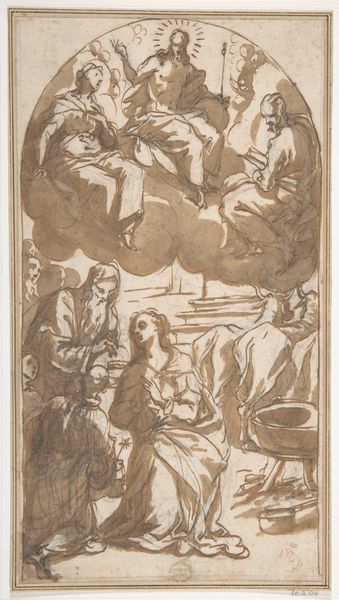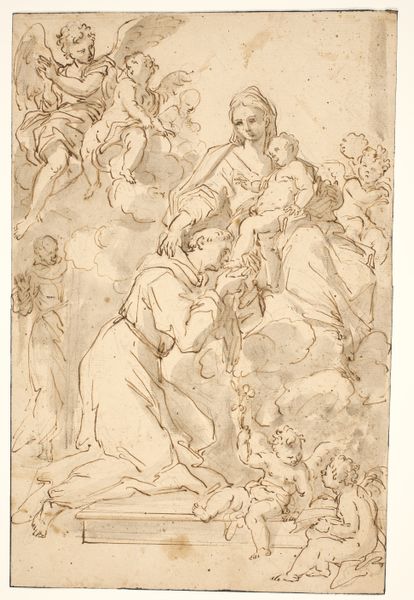
Udkast til scene af Apuleus' "Det gyldne æsel" 4.bog. Røverbandens husholderske fortæller den unge pige myten om Amor og Psyke. Nedenunder et par delfiner og en nøgen figur, muligvis vandmanden - himmeltegn for februar og januar 1806 - 1809
0:00
0:00
drawing, paper, ink, pen
#
drawing
#
allegory
#
neoclassicism
#
figuration
#
paper
#
ink
#
pen
#
history-painting
#
academic-art
#
nude
Dimensions: 194 mm (height) x 165 mm (width) (bladmaal)
Editor: This is a drawing by Nicolai Abildgaard, made between 1806 and 1809. It's an ink and pen drawing on paper, and it's called "Udkast til scene af Apuleus' 'Det gyldne æsel' 4.bog." The composition feels really intriguing with those figures at the top and those at the bottom. How do you read its different layers and organization of elements? Curator: It's fascinating to consider the dichotomy established within the frame, isn't it? The division between the upper figural scene and the lower register is significant. The composition invites us to consider Abildgaard's method, emphasizing the contrast in form and the tonal differences that distinguish one area from another. How do you view the relationship between line and shading? Editor: I see that the lines are very clean and defined, particularly in the figures at the top, whereas there's more shading in the lower portion, giving it a bit more depth and a slightly different feel. How do you think the interplay of those elements—line, shading, the balance of forms—works to communicate meaning here? Curator: The deliberate employment of line serves to delineate form with precision, thereby contributing to the clarity of the narrative elements. Notice how the strategic application of shading provides volume and mass. Would you agree that it enhances our perception of three-dimensionality? This considered technique brings to mind how Academic art uses those concepts of clarity of structure and spatial definition. Editor: Yes, definitely. So, focusing on Abildgaard's method, what does the relationship between these formal choices suggest about the artist's intentions? Curator: Through its formal qualities, Abildgaard asks us to consider how elements such as composition, line, and tone operate in conjunction to represent both narrative and allegorical significance. Considering it’s a study, might he be reflecting on those decisions for a later, final work? What does this incomplete work teach us about his methodology? Editor: I see now. It's about decoding how those specific components contribute to our reading of the work as a whole and appreciating Abildgaard’s artistic choices and intention, as far as we can. Thanks! Curator: Indeed. I appreciate your close looking and the fresh perspectives that you have offered.
Comments
No comments
Be the first to comment and join the conversation on the ultimate creative platform.
